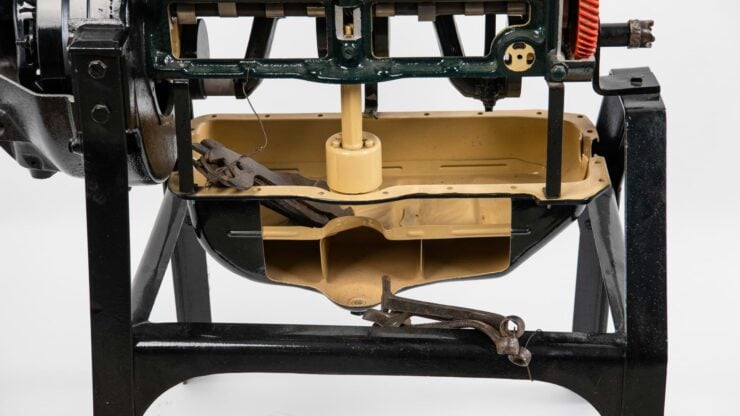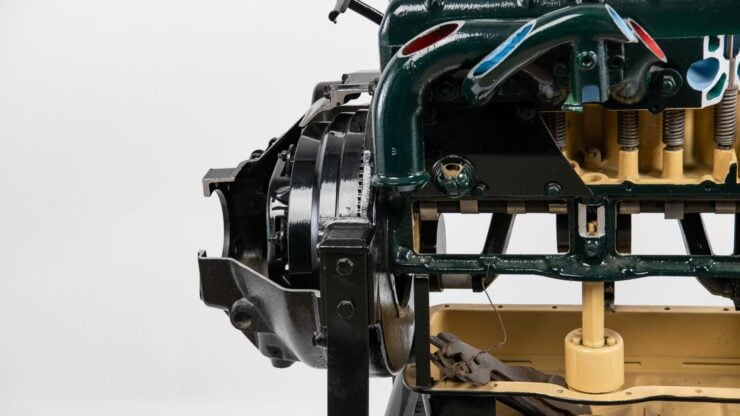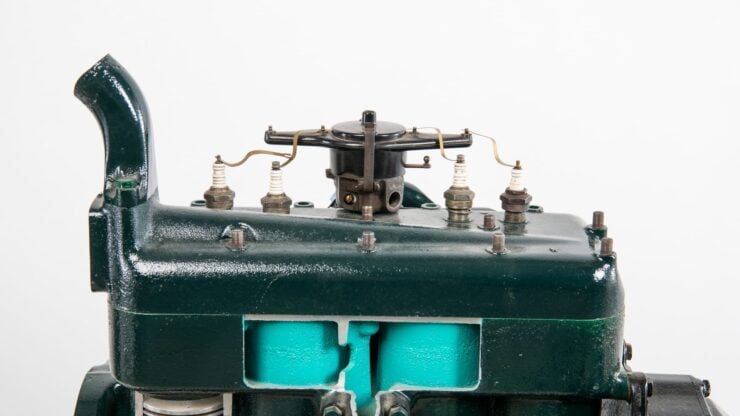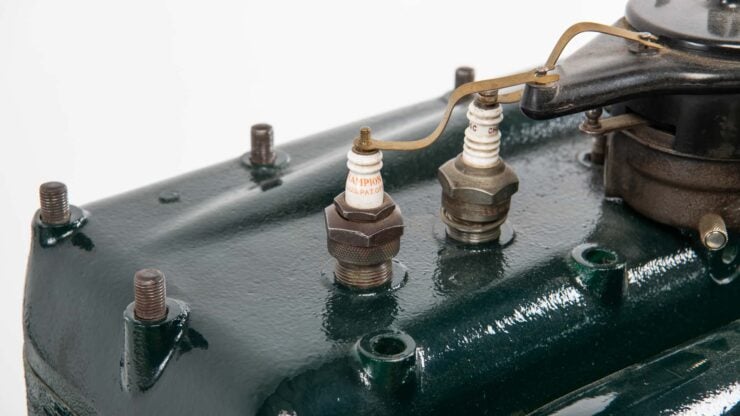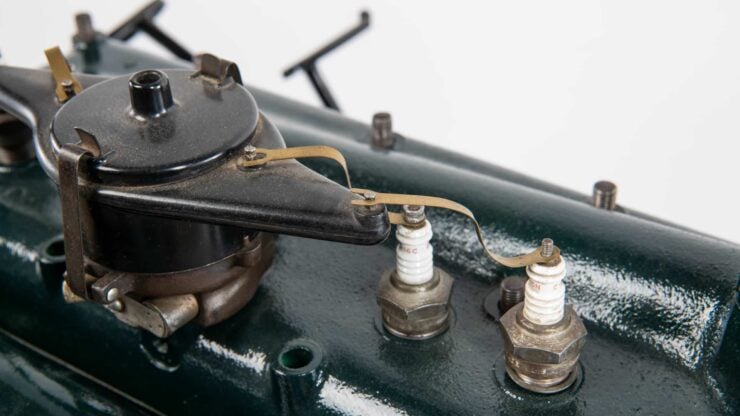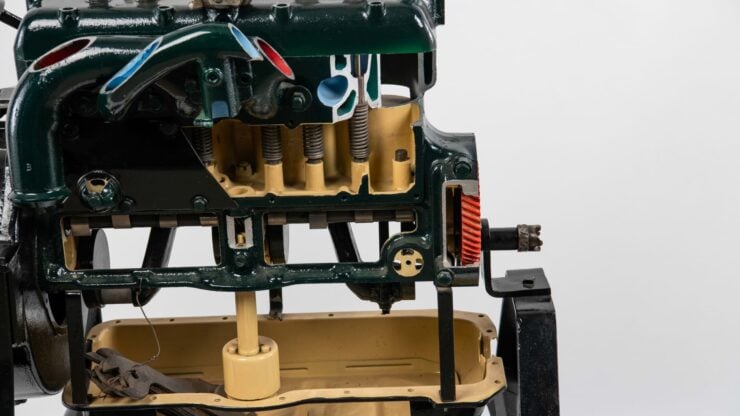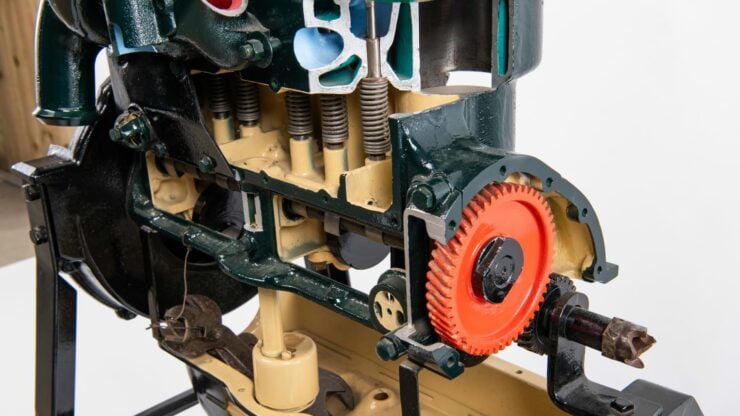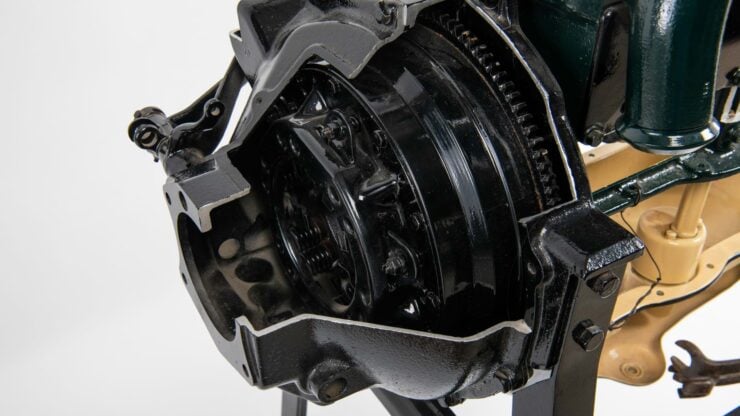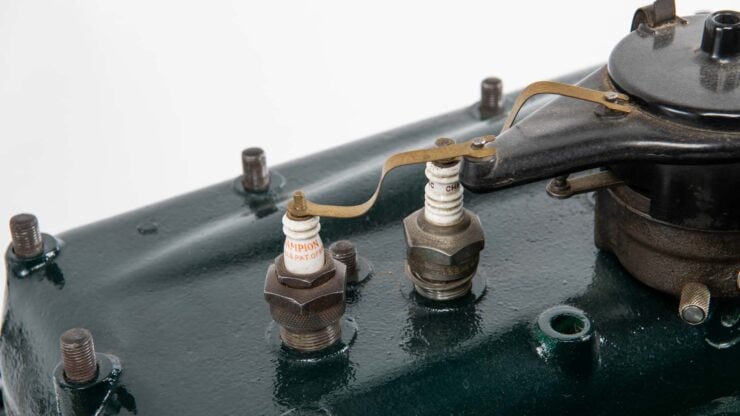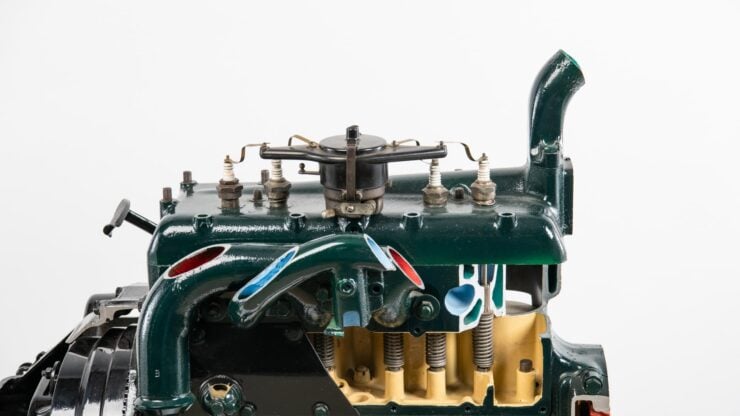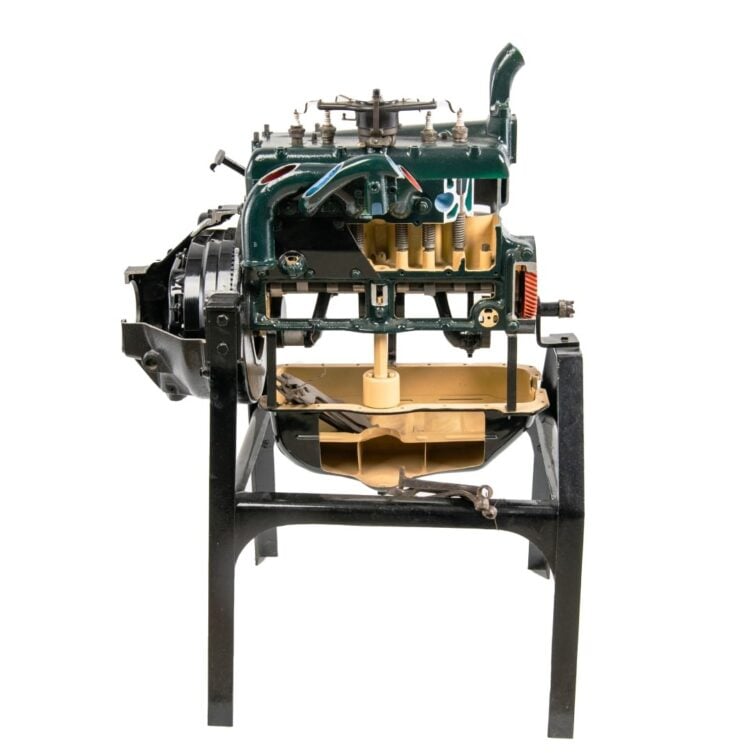This is a Ford Model A cutaway training engine, it would have been used in period for training new mechanics on the finer points of engine construction and operation.
The engine has numerous cutaway sections allowing the observer to see into the coolant and oil passageways, they can also see the movement of the piston, valvetrain, camshaft, crankshaft, and more.
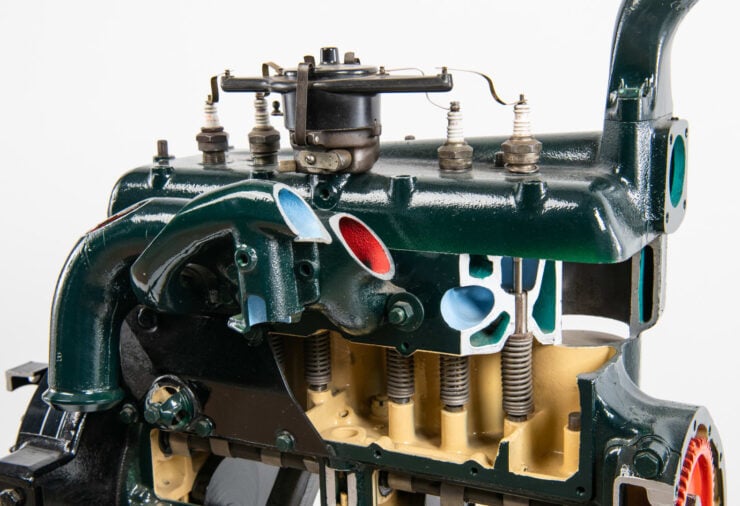

The Ford Model A Engine
The Ford Model A made its debut in 1928 as the long-awaited replacement for the Model T, which had been in production since 1908. The Model T, with over 15 million units sold, was a tough act to follow but the Model A proved a major success for Ford – offering buyers more power and speed, better reliability, and updated styling.
The Ford Model A would be powered by a 200 cubic inch (3.3 liter) flathead inline-four that had been derived from the earlier Model T engine, but which offered twice the power.
This new engine had a longer stroke and a wider bore, and a higher compression ratio to take advantage of the improved fuels that had become available. The side valve, non-crossflow design featured distinctive overhead spark plugs, common on flathead engines of the time.
The Model A engine would be used on automobiles, but it was also put to work in trucks, tractors, vans, boats, and a number of other vehicle types. It came from the factory with 40 bhp at 2,200 rpm and 128 lb ft of torque – considerably more than its predecessor.
The Model A Cutaway Engine Shown Here
The engine you see here is an original Ford Model A unit that’s been given a series of carefully placed cutaway sections to showcase the internal workings.
Engines like this were used for training mechanics, they were also often displayed in dealerships to show off the internal mechanical improvements that had been made to engines to encourage people to upgrade.
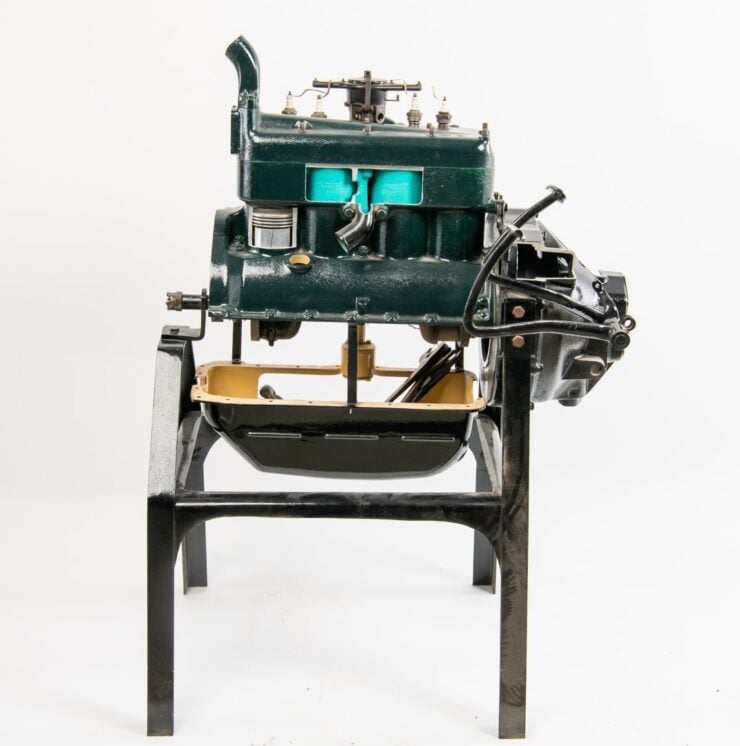


This particular example is fitted to a display stand for easy viewing, and it shows every key part of the engine from the sump and crankshaft up to the camshaft, valves, connecting rods, and a piston.
It’s now due to roll across the auction block with Mecum in mid-May. If you’d like to read more about it or place a bid you can visit the listing here.
Images courtesy of Mecum
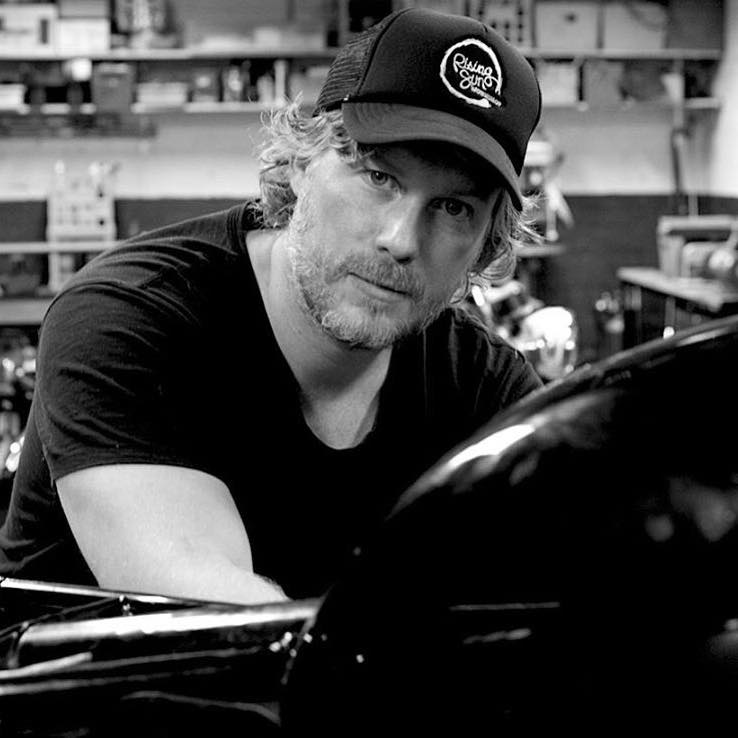

Articles that Ben has written have been covered on CNN, Popular Mechanics, Smithsonian Magazine, Road & Track Magazine, the official Pinterest blog, the official eBay Motors blog, BuzzFeed, Autoweek Magazine, Wired Magazine, Autoblog, Gear Patrol, Jalopnik, The Verge, and many more.
Silodrome was founded by Ben back in 2010, in the years since the site has grown to become a world leader in the alternative and vintage motoring sector, with well over a million monthly readers from around the world and many hundreds of thousands of followers on social media.


